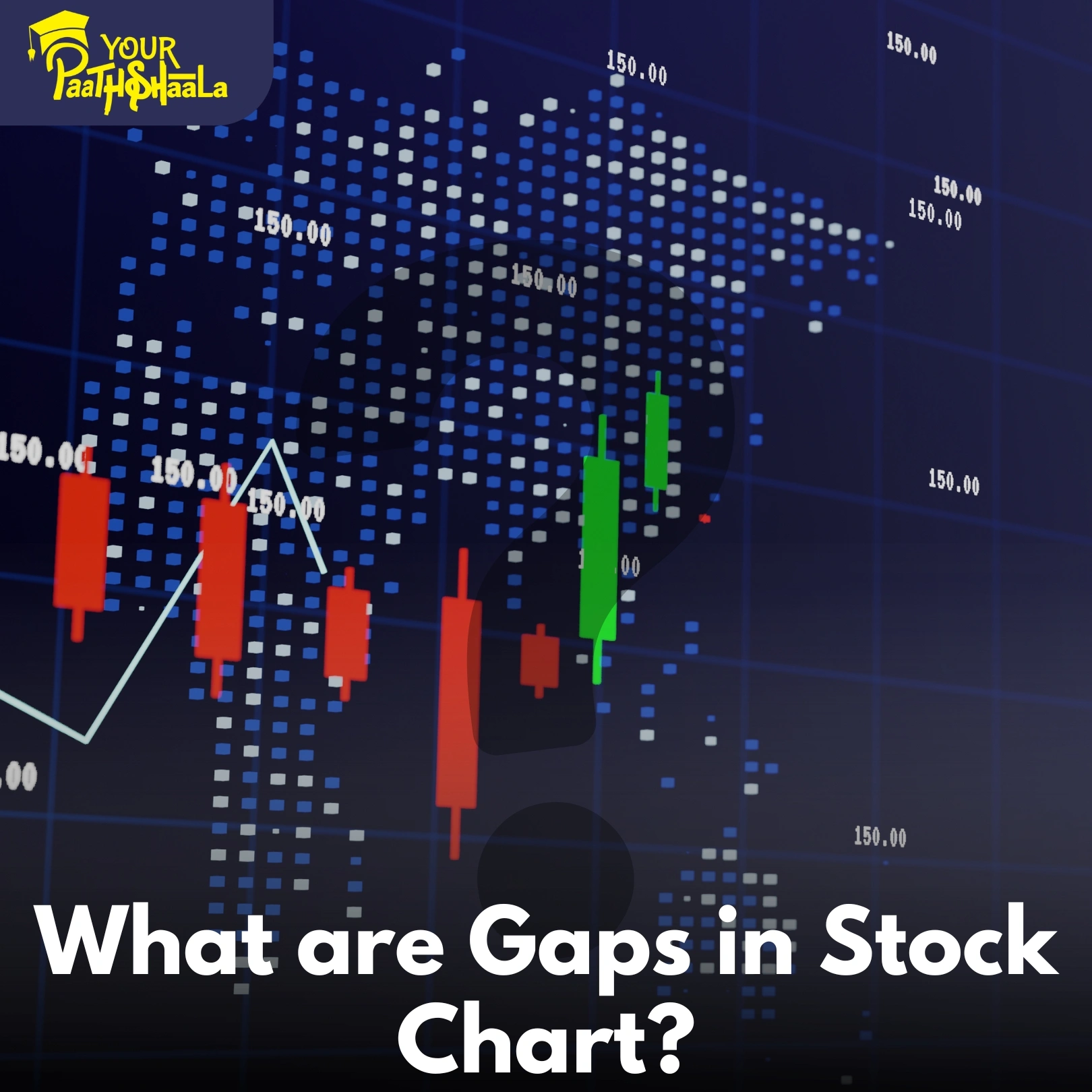What are Gaps in Stock Charts? The Complete Guide to Price Gaps in the Stock Marke
What are Gaps in Stock Charts? If you have ever looked at a stock chart and noticed a sudden jump or drop in price with no trading in between, you’ve spotted a gap. Gaps are one of the most intriguing and important patterns in technical analysis. They can signal major shifts in market sentiment, present unique trading opportunities, and sometimes even warn of risks ahead. In this comprehensive, SEO-friendly guide, we’ll break down what gaps are, why they happen, the different types of gaps, and how traders and investors can use them to their advantage.
What are Gaps in Stock Charts?
A gap in a stock chart is a blank space or interval where no trading has taken place between two consecutive periods. This typically appears when a stock’s price opens significantly higher or lower than its previous closing price, creating a visible “gap” on the chart1567.
For example, if a stock closes at $50 on Monday and then opens at $55 on Tuesday with no trades in between $50 and $55, a gap is formed. Gaps can occur on daily, weekly, or even intraday charts, but they are most common on daily charts67.
Why Do Gaps Occur?
Gaps are caused by a sudden shift in supply and demand, often triggered by news or significant events that happen after the market closes. These can include:
Earnings announcements
Mergers and acquisitions
Product launches or failures
Economic data releases
Analyst upgrades or downgrades
Unexpected global events
When the market reopens, traders react to this new information, causing the price to jump or drop sharply, leaving a gap on the stock chart156.
Automated trading algorithms and after-hours trading can also contribute to gaps, especially in today’s fast-moving markets5.
How Do Gaps Look on a Chart?
On a candlestick or bar chart, a gap appears as a space between two candles or bars. There are two primary kinds of gaps:
Up Gap: The lowest price of the new period is higher than the highest price of the previous period. This is generally seen as bullish.
Down Gap: The highest price of the new period is lower than the lowest price of the previous period. This is generally seen as bearish67.
The Four Main Types of Gaps
Not all gaps are created equal. Understanding the different types of gaps is essential for interpreting what they might mean for future price action. The four main types are:
1. Common Gaps
Also known as: Area gaps, trading gaps, or pattern gaps.
Where they appear: In sideways or range-bound markets, often with low volume.
Significance: Usually uneventful and often get filled quickly, meaning the price returns to its pre-gap level within a few days.
Typical causes: Routine events like a stock going ex-dividend or low trading interest267.
2. Breakaway Gaps
Where they appear: At the end of a price pattern, often at support or resistance levels.
Significance: Signal the start of a new trend or a major breakout. These gaps are usually accompanied by high volume and are less likely to be filled soon.
Typical causes: Strong news, earnings surprises, or major technical breakouts24567.
3. Runaway Gaps (Continuation Gaps)
Where they appear: In the middle of a strong trend, often after the trend is already established.
Significance: Indicate a surge in momentum and investor interest, suggesting the trend will continue. These gaps are rarely filled quickly.
Typical causes: Increased participation or enthusiasm in the ongoing trend, often with rising volume24567.
4. Exhaustion Gaps
Where they appear: Near the end of a strong trend, just before a reversal.
Significance: Signal that the current trend is running out of steam. Often followed by a reversal or significant correction, especially if accompanied by high volume.
Typical causes: Final burst of buying or selling before the trend changes direction24567.
What Does “Filling the Gap” Mean?
A gap is said to be “filled” when the price moves back to its original pre-gap level. This happens quite often, especially with common gaps, as the market digests the initial overreaction and returns to a more balanced price1456.
Gap Fill: The price returns to the level where the gap started.
Gap Fade: When a gap is filled on the same trading day, often as traders take profits or the initial excitement fades4.
Breakaway and runaway gaps are less likely to be filled quickly because they are usually driven by strong momentum or significant news45.
Real-World Examples of Gaps
Amazon (AMZN):
A small gap occurred between October 26 and October 27, 2023, when the price jumped from $119.57 to $127.74, reversing a downtrend and continuing to climb1.
Alphabet (GOOGL):
A gap down happened from October 24 to October 25, 2023, when the price dropped from $138.81 to $125.61 after a period of gains. The price then rebounded, filling the gap as it returned to pre-gap levels1.
These examples show how gaps can signal both reversals and continuations, and why watching for gap fills is important.
Why Are Gaps Important in Technical Analysis?
Gaps are significant because they often signal a change in market sentiment or the beginning of a new trend. Traders and investors pay close attention to gaps for several reasons:
Trend Identification: Breakaway and runaway gaps can confirm the start or continuation of a trend.
Reversal Signals: Exhaustion gaps can warn of a potential reversal.
Trading Opportunities: Gaps can offer entry and exit points for both short-term and long-term traders.
Market Psychology: Gaps reflect sudden shifts in supply and demand, often revealing crowd behavior and emotional reactions1456.
How to Trade Gaps: Strategies for Traders
Gaps can be powerful trading opportunities if you know how to interpret them. Here are some popular gap trading strategies:
1. Gap and Go
How it works: Enter a trade in the direction of the gap, expecting the momentum to continue.
Best for: Breakaway and runaway gaps, especially when supported by high volume and strong news.
Tip: Use stop-loss orders to manage risk in case the gap reverses53.
2. Gap Fill (Fade the Gap)
How it works: Trade in the opposite direction of the gap, expecting the price to return to its pre-gap level.
Best for: Common gaps and exhaustion gaps, especially when the initial move seems overdone or unsupported by volume.
Tip: Wait for confirmation of a reversal before entering the trade453.
3. Support and Resistance at Gaps
How it works: Gaps often create new support or resistance levels. If the price returns to the gap area, it may bounce or reverse.
Best for: All types of gaps, but especially breakaway and exhaustion gaps35.
4. Volume Analysis
How it works: High volume on a gap day confirms the strength of the move (breakaway/runaway gaps). Low volume may suggest a lack of conviction (common/exhaustion gaps).
Tip: Always check volume to gauge the reliability of the gap57.
Key Points to Remember When Trading Gaps
Not all gaps are tradable: Focus on those with strong volume and clear support/resistance levels.
Gaps can be risky: Sudden reversals are common, especially if the initial gap was driven by emotion rather than fundamentals.
Use stop-loss orders: Protect yourself from unexpected moves against your position.
Combine with other indicators: Use moving averages, RSI, or candlestick patterns for confirmation.
Frequently Asked Questions About Gaps
Q: Do all gaps get filled?
A: No. While many gaps, especially common gaps, are filled, breakaway and runaway gaps often remain unfilled for long periods due to strong trends or significant news45.
Q: Are gaps only seen on daily charts?
A: Gaps are most common on daily charts but can also appear on weekly or monthly charts, though less frequently. Intraday gaps can occur but are often less significant6.
Q: What causes gaps in stock prices?
A: Gaps are caused by sudden changes in supply and demand, often due to news, earnings, economic data, or market sentiment shifts156.
Q: Can gaps be predicted?
A: While you can anticipate potential gaps around major news events or earnings, the direction and size of the gap are hard to predict. Most traders react to gaps rather than predict them.
The Psychology Behind Gaps
Gaps are a reflection of collective market psychology. They often occur when investors react emotionally to news, causing an imbalance in supply and demand. This can lead to overreactions, which are sometimes corrected as the market “fills the gap” and returns to a more rational price level456.
Institutional traders and algorithms may also exploit gaps, adding to the volatility and sometimes accelerating the gap fill process5.
How to Spot High-Quality Gap Setups
Look for high volume: Strong volume confirms the conviction behind the gap.
Check the news: Major earnings, mergers, or economic data are more likely to cause meaningful gaps.
Identify support/resistance: Gaps that occur at key levels are more significant.
Watch for follow-through: The best gap trades occur when there is momentum in the direction of the gap.
Gaps and Market Trends
Gaps can play a crucial role in trend analysis:
Breakaway gaps often signal the start of a new trend.
Runaway gaps confirm the strength and continuation of an existing trend.
Exhaustion gaps indicate a trend may be ending.
Common gaps are usually just noise and often get filled quickly24567.
Summary Table: Types of Gaps and Their Meanings
| Type of Gap | Where It Appears | What It Signals | Likelihood of Being Filled |
|---|---|---|---|
| Common Gap | Sideways/range markets | Little significance | High |
| Breakaway Gap | At breakout points | Start of new trend | Low |
| Runaway Gap | In strong trends | Trend continuation | Low |
| Exhaustion Gap | At trend ends | Possible reversal | Medium to High |
Conclusion: Mastering Gaps for Smarter Trading
So, what is Gaps in stock charts? They are more than just empty spaces-they’re powerful signals that can reveal shifts in market sentiment, highlight trading opportunities, and provide early warnings of reversals or breakouts. By understanding the different types of gaps, why they occur, and how to trade them, you can add a valuable tool to your trading arsenal.
Key takeaways:
Gaps are caused by sudden changes in supply and demand, often after major news or events.
There are four main types: common, breakaway, runaway (continuation), and exhaustion gaps.
Not all gaps are tradable or significant-focus on those with strong volume and clear context.
Gaps can offer both trend-following and reversal opportunities, depending on their type and location.
Always use risk management and combine gap analysis with other technical tools for the best results.
Start paying attention to gaps on your stock charts, and you’ll gain deeper insight into market dynamics and uncover new ways to profit from price movements. Happy trading!







